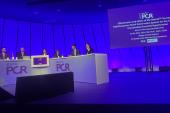As Renal Denervation Heads to Advisory Review, FDA Sets Out Key Questions
The Circulatory System Devices Panel will meet next week to vote on PMA requests from two manufacturers.

Next week, advisors to the US Food and Drug Administration will convene to discuss the future of two renal denervation devices for the treatment of uncontrolled hypertension: in advance of that meeting, the FDA has released two executive summaries giving some insight into issues it hopes its advisory committee can clarify.
Nearly 10 years ago, hopes for renal denervation as an emerging treatment option were dashed when the SYMPLICITY HTN-3 trial failed to demonstrate an impact on blood pressure compared with a sham procedure. But improvements in the technology and results from recent studies have again put the technique in the spotlight. No renal denervation systems have yet been approved for clinical use in the United States.
On August 22, the FDA’s Circulatory System Devices Panel will discuss, make recommendations, and vote on the premarket approval (PMA) application for the Paradise Ultrasound Renal Denervation System (ReCor Medical), and on August 23 they will do the same for the Symplicity Spyral Renal Denervation System (Medtronic).
Paradise is supported by data from three RCTs: RADIANCE-HTN SOLO, RADIANCE-HTN TRIO, and RADIANCE-II. Paradise is a catheter-based system used to deliver ultrasound energy and disrupt renal sympathetic nerve activity through ablation. The goal is to reduce systemic arterial blood pressure in patients with patients with resistant hypertension.
Based on the executive summary, the advisors will be tasked with determining “whether a reasonable assurance of safety and effectiveness has been established for the proposed indications for use based on the totality of the data” and make recommendations on whether the evidence supports the intended patient population.
In 2020, Paradise met criteria for breakthrough device designation, but the FDA notes online that the device still must meet safety and efficacy standards based on the totality of data to gain PMA approval.
The Off-Med SOLO and RADIANCE-II trials met their primary effectiveness endpoints for baseline adjusted difference of daytime ambulatory systolic BP at 2 months versus sham control. In the FDA’s assessment, the On-Standardized Med TRIO “did not meet its primary effectiveness endpoint with a mean difference reduction of 4.5 mm Hg favoring [renal denervation] (P = 0.0809).” But adding further nuance for the advisory panel to grapple with, the FDA reviewers go on to explain that “because TRIO outcomes followed a non-normal distribution, a baseline adjusted ANCOVA on the ranks was assessed (P = 0.0223). In a supportive analysis, the median differences in reduction (median of all pairwise differences of BP reduction) was 4.5 mm Hg favoring [renal denervation].”
Other issues on the advisory panel’s agenda include:
- The clinical value of ambulatory and office BP in assessing blood-pressure changes and evaluating device efficacy
- Diameter stenosis values at 12 months in trial data, specifically a 0.8% incidence of 51-70% diameter stenosis, a 2.1% incidence of 31-50%, and a 1.3% incidence of 1-30%
- The magnitude of BP reduction, given an earlier recommendation that a 5- to 7-mm Hg reduction compared with controls is a clinically meaningful effectiveness threshold
- Durability issues, specifically suggestions of reduced efficacy over time and inconsistent medication burden differences
- The role of patient preference in risk-benefit decisions
- Plans for a postapproval study that will follow all patients enrolled in the SOLO, TRIO, and RADIANCE II trials plus a US arm of the Global Paradise System Registry currently ongoing in Europe and the United Kingdom
The executive summary for Symplicity Spyral, published later in the day, lays out in similar detail the areas where the FDA’s advisors are seeking clarity and productive discussion. This device is supported by data from SPYRAL HTN-OFF MED, which met its primary efficacy endpoint, and SPYRAL HTN-ON MED, which did not.
According to the document, the FDA is seeking panel input on the magnitude and potential clinical impact of renal denervation efficacy, the relative importance of ambulatory versus office BP assessment, and the durability of the BP reduction achieved. As with the Paradise device, there will be discussion of risk-benefit ratios, and the postapproval studies and labeling requirements should the device be approved.
In a research note to investors, Wells Fargo medical device analyst Larry Biegelsen predicted a 70% chance that the committee will approve the PMAs from both companies, “which should lead to US approval around year-end 2023.”
L.A. McKeown is a Senior Medical Journalist for TCTMD, the Section Editor of CV Team Forum, and Senior Medical…
Read Full BioSources
US Food and Drug Administration. Executive summary: ReCor Medical’s Paradise ultrasound renal denervation system. Published and accessed on: August 18, 2023.



Comments